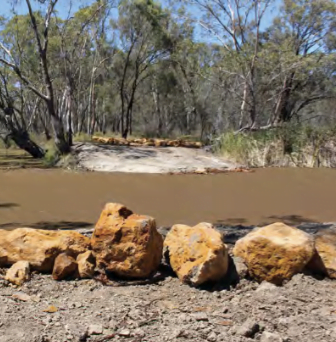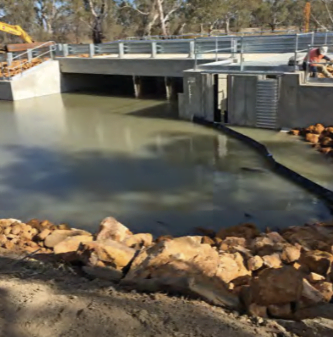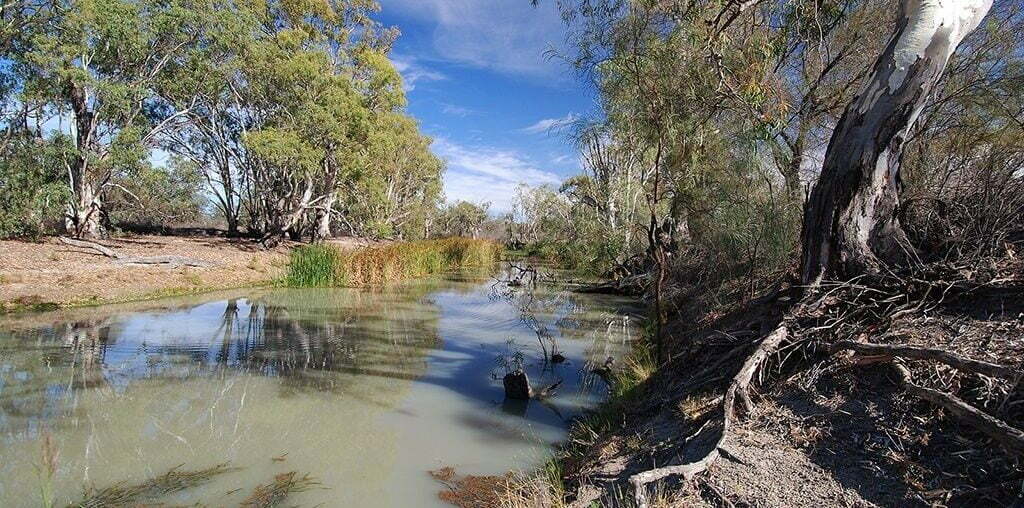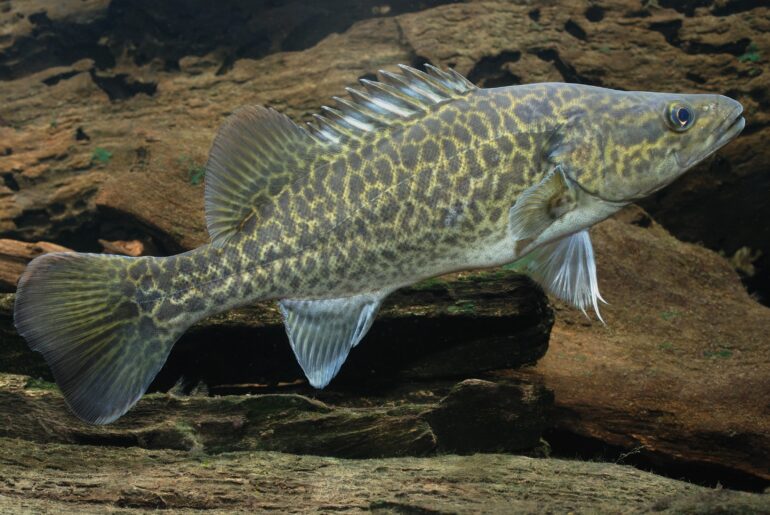Lara Suitor provides us with an update on the works underway at Katfish Reach to improve fish movement across this fabulous floodplain system.
The Eckert Katarapko Anabranch and Floodplain system is one of three large anabranch systems located within the lower Murray River between Berri and Loxton in South Australia. The Eckert Creek anabranch bypasses Lock and Weir No. 4, by producing a head gradient of approximately 3.5 metres between the main Eckert Creek inlet, and the confluence of Katarapko Creek and the River Murray. Due to this hydrological dynamic, the Eckert Katarapko anabranch system encompasses a range of diverse aquatic habitats with permanent fast-flowing and slow-flowing creeks. Habitats with this hydraulic diversity are now scarce in the lower River Murray, and this resulted in ‘Katfish Reach’ being identified as a high value site for native fish. In 2007, the floodplain became part of a network of native fish demonstration reaches.
The total Katarapko floodplain area covers 9000 hectares, and traverses over 56 kilometres of creeks. The site is a South Australian River Murray priority floodplain. An Implementation Plan for the site was developed in 2008, with the Katifsh Reach Steering Group playing a key role in the plan’s development. The plan identified 17 key threats across nine project site assets, with two threats standing out – the lack of environmental flows and instream barriers to fish movement.
The Katarapko and Eckert Creek system have some of the most diverse flowing habitat for native fish, however, barriers, such as pipes, roads and earthen embankments, have meant native fish are unable to follow hydrological cues and move through the system to find suitable habitat and spawning grounds. In response to this situation, a number of interventions have now been implemented to improve hydrology and fish movement, including the removal or modification of six major instream fish and flow barriers throughout Katfish Reach. This on-ground work is nearly complete, and will significantly increase water flows and facilitate fish passage.


Improving flow and fish passage
Construction of an eight-bay vertical slot fishway and a four-bay overshot regulator at the main inlet of Eckert Creek (Bank J) to replace a 900 milimetre diameter pipe and rock bank commenced April 2016. The Katarapko Stone Weir will be lowered by 340 milimetres to allow river flows greater than 5000 megalitres/day to overtop the Weir.
Two banks on secondary inlets of Eckert Creek (N and K) have also been removed. A 300 milimetre pipe in Eckert Creek South Arm was replaced with larger culverts, and the Log Crossing structure were all completed in 2015. The new structure consists of a four-bay overshot regulator and a five-bay vertical slot fishway, with capacity to add a PIT reader in the future.
Completion of the new Log Crossing regulator and fishway, as well as the removal of associated smaller barriers in the system, allows native fish to move through the anabranch in response to changes in water level and flow for the first time in 80 years.


Monitoring results
Annual summer monitoring in 2015 recorded increased numbers of small bodied native fish species such as Unspecked hardyhead, carp gudgeon and Murray River rainbowfish. Ongoing fish condition monitoring within the Katifsh Reach site will assist us in gaining knowledge on the changed hydraulic conditions due to on-ground interventions. Recent fish monitoring results are positive, and have provided inspiration to community members involved in the project. A number of complementary projects and activities are underway within the project site including; delivery of environmental water, protection of Aboriginal cultural sites, rabbit and weed control, carp musters, bike trails and the ongoing removal of barriers to fish movement.
The Project
The Katfish Reach Project is a partnership between the community and government agencies to deliver the following objectives:
- improve floodplain and wetland health,
- manage water to create wetting and drying cycles,
- increase native fish numbers,
- improve native fish movements and flows through the removal of barriers,
- improve the health of native plant communities,
- control pest animals and weeds,
- improve habitat for native animals including threatened species,
- recognise the importance of traditional Aboriginal culture and European heritage.




